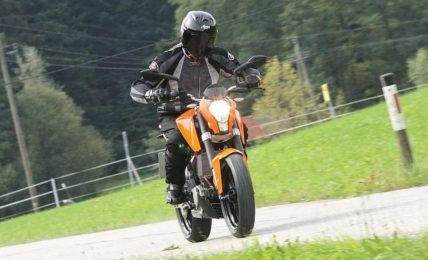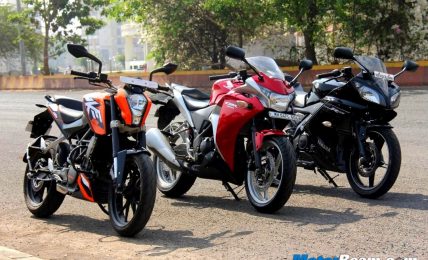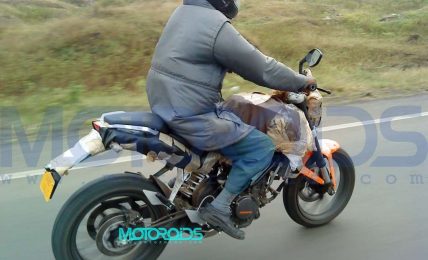Wide rear view mirrors with chunky stems look as good as they function!
Ergonomics – For average heighted riders, the Duke 200’s riding position offers an exemplary blend of comfort and control. Tall saddle height and wide handlebars provide a commanding position while the rear-set footpegs allow for a slightly leaned-in posture which boosts confidence in corners. However, the footpeg positioning will play spoilsport in the case of taller riders where movement will feel restricted. While softer seat cushioning will make things slightly better for prospective customers, there is still a long way to go before the Duke 200 can be termed as comfortable for munching miles. Even though the split grab rails are well-built, that pillion seat is best left alone due to its size, or the lack of it!
BS4 update has had no effect on the power and torque figures
Performance – Acclaimed for its maddening rush of acceleration, the Duke 200’s 199.5cc motor pumps out 24.6 BHP of power and 19.2 Nm of torque. This liquid-cooled motor utilises a revised cylinder head and balancer shaft to pass through the BS4 barrier and the motorcycle gains 5 kgs in the process. Refinement levels have gone up and the Duke 200 feels smoother across the rev range. Instant power delivery ensures that acceleration through the initial gears is thunderous and requires well-timed upshifts to prevent hitting the abrupt 10,500 RPM redline.
Being a naked motorcycle, it suffers from fatiguing wind blast at high speeds
The 2017 Duke 200’s acceleration is comparable to that of a 2-stroke motorcycle
Post 4500 RPM, there is a strong surge of torque and the RPM bar rushes to the redline in any gear at any speed. Nearing its top speed of 129 km/hr, the Duke 200 feels less punchier than before probably due to the increase in weight. Coupled with positive gearshifts and a light clutch lever, compact dimensions allow the Duke 200 to tackle city traffic without fuss. Underbelly exhaust continues to emit an unmistakable KTM tone transforming into a loud racket near the redline. Despite being packed with performance, the motorcycle isn’t exactly a fuel guzzler delivering over 30 kms to a litre.
Economical MRF tyres offer decent grip even when pushed hard
Riding Dynamics – With no change to the suspension, frame or braking setup, the Duke 200 continues to manifest rich dynamics in its latest avatar as well. Its trellis frame provides a substantial amount of feedback and immense flickability. Utilising 43 mm USD forks at the front and a monoshock at the rear, the motorcycle offers a firm ride on paved roads. However, ride quality deteriorates sharply on bad roads as the WP Suspension components are sprung on the stiffer side. This is where we felt that the open-cartridge forks of its siblings were more suited to our road conditions. Even though the brakes are powerful, weak initial bite from the front disc and lack of ABS is a letdown.




